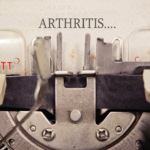“GRAPPA, working through the OMERACT organization, has allowed us to develop the tools we need to assess patients with PsA,” says Christopher T. Ritchlin, MD, MPH, professor of medicine at the University of Rochester Medical Center in Rochester, N.Y. Dr. Ritchlin is a long-time collaborator with Dr. Gladman.
“Our goals have always been a little bit outlandishly promising,” states Arthur Kavanaugh, MD, professor of medicine and director of the Center for Innovative Therapy in the Division of Rheumatology, Allergy and Immunology at the University of California at San Diego.
Timeline
2003–First face-to-face GRAPPA annual meeting/standalone meeting, held in New York
2004–Prioritized domains of inquiry within PsA and PsC research finalized at OMERACT
2004–Intranet for GRAPPA launched
2006–GRAPPA bylaws and adopted
2006–Development of evidence-based review of PsA treatments published
Everything Came Together
PsA was first described by Verna Wright in the 1960s. A bit later, he and John Moll developed the PsA criteria. After those events, interest in the disease “trickled on for 20 to 30 years,” says Dr. Helliwell. [See “Psoriatic Arthritis: From Leeds to the Limelight” for a history of PsA written by Drs. Helliwell and Ritchlin.] In the late 1990s, Dr. Helliwell and a PhD fellow, Will Taylor, set up the Classification of Psoriatic Arthritis, or CASPAR, study with six European centers, later expanding to include 30 centers worldwide.2 As the study drew to a conclusion, others urged them to continue the collaboration.
In the meantime, Philip J. Mease, MD, director of rheumatology research at Swedish Medical Center and clinical professor at the University of Washington in Seattle, had just finished the first study of etanercept in PsA, showing for the first time progress in reducing inflammation and joint damage.3 More rheumatologists and dermatologists, as a result, became interested in PsA and PsC because they now had more effective treatments to offer their patients. A core group of people began floating the idea of forming a group specific to PsA and PsC. Dr. Mease was instrumental in securing funding to stage the first meeting and an ongoing organization. “I think Philip Mease and Dafna, really, had the idea that we should not stop with collaboration when CASPAR finished; that we should keep the forward push,” recalls Dr. Helliwell. “Everything came together.”
Specialty Cross-Fertilization
Because PsC and PsA are intertwined (between 25%–30% of patients with psoriasis will go on to develop PsA), there was no doubt about involving dermatologists, says Dr. Gladman. Currently, half of the steering and executive committees are dermatologists. “Their numbers are coming up nicely,” she reports.


